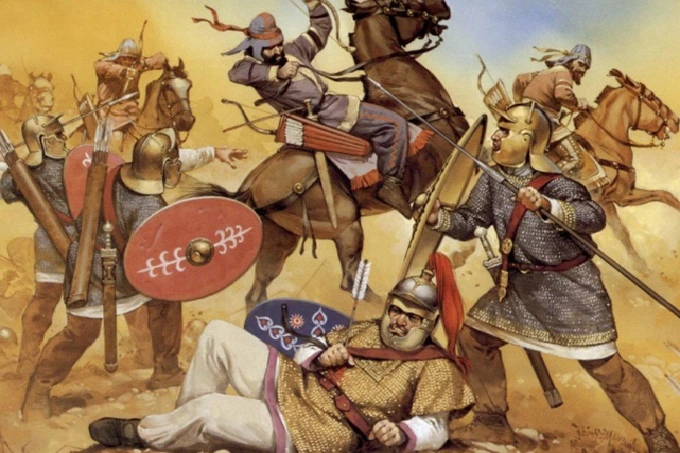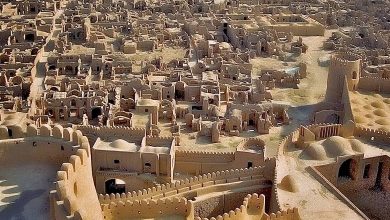Mystery of the origin of the great people who conquered Europe in the 7th century: the Avar Empire

At the beginning of the 6th century AD, a mysterious warlike people came to Europe from the East and conquered most of her territories. The Avars created a powerful empire that lasted for over 200 years. Historians have long debated what was the original homeland and origin of this nation.
Contradictory information about them was explained by the fact that they themselves did not leave any records. Their worst enemies – the Byzantines, wrote everything that was known about them. So where did the formidable people come from, who conquered Europe and where did they disappear without a trace?
Came from nowhere and went nowhere
Avars appeared in Europe suddenly. No one knew where they came from and who these fierce fearless warriors were. Most of the meager information about them is taken from the historical sources of Byzantium. How much you can trust the worst enemy – a rhetorical question, I guess.
There is evidence that they come from the Mongolian steppes, from the Zhuzhan empire. It was destroyed by the Turkic invasion at that time. The Turks, in turn, assured that the Avars descended from them. Should they believe in their very ardent desire to challenge such a prestigious legacy?
Common Roots and Legacy
Historians wondered if this was a well-organized migratory group or a mixed gang of fugitives for many years. Archaeological research has revealed many parallels between the products of the inhabitants of the Carpathian basin and the Eurasian nomads. Specialists studied weapons, ceramics, clothing, and horse harness. For example, these people used a crescent-shaped golden pectoral as a symbol of power.
It was the Avars who brought the stirrup to Europe. Scientists still have not been able to trace the exact place of its origin in the vast Eurasian steppes. This study involved an interdisciplinary team that included researchers from the Max Planck Institute for Evolutionary Anthropology in Leipzig, ELTE University, and the Institute of Archeogenomics in Budapest, Harvard Medical School in Boston, the Austrian Academy of Sciences, and the Princeton Institute for Advanced Study.
Analysis of remains in the Carpathian Basin
A group of scientists analyzed more than six dozen individuals from burials found in the Carpathian Basin. Experts included in the study about a dozen of the richest Avar tombs ever discovered. They were filled with a huge amount of gold items from the Avar era. The head of the research team, Johannes Krause, says they are fully dedicated to the work.

Scientists have been trying to solve a question that has been a mystery for almost fifteen hundred years. Where did the mysterious warriors come from, who founded a powerful empire that almost crushed the then omnipotent Byzantium? They subjugated the territories of present-day Austria, Hungary, Croatia, Serbia, Romania, and Slovakia and ruled over them for more than two centuries.
Where did the Avars go?
The Avars did the impossible – they dared to impose tribute on the all-powerful Byzantium! Already in the middle of the 6th century, they had no equal power in Europe. Bayan I became the first ruler (khagan) of the Avar Empire. He conquered so many lands that he can be considered the Avar Macedonian. Khagan fought not only with Byzantium but also with the tribes of the Franks and the Thuringians. The power of the empire only grew and reached its peak by the 7th century.
The Avars decided not only to take tribute from Byzantium, they planned to conquer the great city of Constantinople. Here their luck ran out. In the decisive battle, the Avars suffer a crushing defeat. After that, failures rained down on them like from a cornucopia. The empire begins to shake a whole series of popular uprisings. Civil strife tore the khanate apart. During this difficult time in France, Charles I, later nicknamed the Great, comes to power.
The French monarch utterly defeated the Avars and took their capital. Completed the collapse of internal strife. All the lands of the empire up to the Middle Danube were conquered by the Bulgarians. Soon the Avar Empire completely ceased to exist. Historical information suggests that they simply assimilated with their conquerors. Europe breathed a sigh of relief. True, the peace did not last long. The Polovtsians and Pechenegs replaced the Avars.
The study of the genome put an end
The Avars did not leave any written evidence about themselves. Therefore, data on the early genome can provide those compelling clues that will help scientists unravel the mystery of their origin. The studies made it possible to narrow the time span of the alleged migration of the Avars.
In just a couple of years, they covered more than 5,000 kilometers from Mongolia to the Caucasus, and a decade later, they firmly settled on the territory of present-day Hungary. According to experts, it was the fastest long-distance migration in human history that has been reconstructed so far.
The researchers found that there is a clear relationship between the Avars and Northeast Asia. In other words, the version of their probable origin from the Rouran Empire has a basis. In addition, family ties with ancestors from the steppes of the North Caucasus and Western Asia were found among the Avarian elites of the period of the 7th century. These data suggest that migration continued after the 6th century, when the Avars arrived in Europe.
East Asian origin is found in individuals from various places in the central settlement zone between the Danube and Tisza rivers, in the territory of modern central Hungary. However, outside this core region, enormous differences in levels of admixture between individuals were found. The difference was especially large in the Kölked area in southern Hungary. This suggests the existence of an elite of Avar settlers who ruled a diverse population with the help of a heterogeneous local elite.
These exciting results demonstrate the tremendous potential for an unprecedented collaboration between geneticists, archaeologists, historians, and anthropologists to explore the migration period in the first millennium of the Christian era. Genome studies provide exciting insights into the ancestors of various peoples.




